 NYC-based PIRA Energy Group believes that entering 2016, the oil market really faces two surpluses: excessive inventories and an ongoing imbalance between supply and demand of over 1 MMB/D. In the U.S., the commercial stock surplus made a new high. In Japan, crude runs eased and stocks corrected downward. Specifically, PIRA’s analysis of the oil market fundamentals has revealed the following:
NYC-based PIRA Energy Group believes that entering 2016, the oil market really faces two surpluses: excessive inventories and an ongoing imbalance between supply and demand of over 1 MMB/D. In the U.S., the commercial stock surplus made a new high. In Japan, crude runs eased and stocks corrected downward. Specifically, PIRA’s analysis of the oil market fundamentals has revealed the following:
World Oil Market Forecast
The global oil surplus grew in 4Q15. Entering 2016, the oil market really faces two surpluses: excessive inventories and an ongoing imbalance between supply and demand of over 1 MMB/D. Strong demand growth in 2016 and declines in non-OPEC supply eliminate the imbalance but excess inventory remains.
Ukraine to Align Gas Royalties with Market Rates
The Ukrainian parliament has amended the Tax Code and changed the conditions of calculating the sale price of natural gas for royalties for the use of deposits during gas production. The amendments to the Tax Code bring the calculation of the royalty in line with the requirements of the law on the natural gas market. Previously, the calculation of the royalty was pegged to the upper price of natural gas set by the National Commission for Energy, Housing and Utilities Services Regulation (NCER) before October 2015.
Switching Away from Coal
An extremely long LNG market is translating into a structural recovery of the spark spreads, while the dark spreads have collapsed, especially in the summer months, mirroring the ineluctable eclipse of coal in favor of gas. Our balances have now been changed to reflect a higher risk that French net power exports will be moving lower, especially during the summer. This shift means that French prices will eventually converge more closely toward Germany, also in light of the recent announcement that Belgium’s Doel 3 and Tihange 2 will be soon reconnected to the grid. Germany is relatively less affected by a bearish gas market, as it is pricing closer to marginal costs for efficient coal, which is relatively more difficult to displace.
Dry Bulk Freight Outlook Cut on Iron Ore Outage, China Weakness
The prospects of a late rally in Cape freight rates during the remainder of 2015 have faded. In the Atlantic, the disaster at Samarco’s 30 MMmt/year iron ore operations in Brazil will reduce cargo volumes and restrict long-haul shipments to the Far East. Over in the Pacific, a structural realignment in China’s steel industry finally appears to be taking place, with crude steel production, steel exports and iron ore imports all down in October. The Cape market looks grim for the rest of this year having hit bottom earlier compared to last year. We will be marking down our near-term Cape demand forecasts following the loss of Samarco exports plus its consequential impact on Atlantic to Pacific trade and ballasting patterns. We also have a more bearish outlook on China’s dry bulk demand and on the outlook for Cape freight rates in 2016.
Less-Than-Bullish WCI Auction with New 2016 Reserve Price
The California/Quebec joint carbon auction saw current vintage allowances clear at the projected 2016 minimum reserve price. This mirrored the November 2015 auction, but is lower than secondary market pricing at the time of the auction suggested. Though the future vintage auction saw solid bidding interest, it cleared a bit lower than expected. 88 bidders registered for the auction with 3 new bidders and a number of formerly active bidders taking a break. See PIRA’s excel sheet summary of the auction results and participants.
U.S. Ethanol Prices Decline
U.S. ethanol prices tumbled during most of November, although assessments bounced off the bottom the last few days. The market softened because of higher production and lower demand for ethanol-blended gasoline. As a result, stocks built to a 16-week high.
Corn Demand Picking Up
Export Sales for the week ending November 19th, as released Friday, showed strong corn sales as seasonality hopefully starts to takes over. Soybean sales were average, while wheat sales once again lagged. Corn sales/exports have made up significant ground against last year’s numbers but remain 23% behind, while soybeans are 17% behind last year’s pace at this point.
Global Equities Modestly Changed
Global equities were fractionally changed on the week. In the U.S., the indices were modestly higher. For individual sectors, retail, consumer staples, and energy all outperformed. Utilities were the weakest. Internationally, many of the tracking indices declined. The poorest performers were Latin America, BRIC’s, and emerging markets.
Freight Market Outlook
Wide monthly swings in tanker rates have become the new normal, and October was no exception. VLCC rates plunged from a high of WS 88 in early October to WS 46 by the end of the month, but they have bounced back since. Rates in other size sectors also experienced wide swings. The current glut of oil (500 MMB by end 4Q 15) has helped the tanker sector in a number of ways. Higher OPEC production and expanding waterborne trade have been added substantially to vessel demand, but a bloated supply chain has also contributed. Higher land inventories have caused excess port time and discharge delays, especially in China. In addition, charterers knowing that discharge delays are inevitable on arrival are slowing vessels down on their laden legs while capturing contango credits, reducing fleet efficiency. Floating storage economics are improving and the volume of crude stored in tankers will grow in 1Q16.
U.S. Stock Surplus Makes New High
The U.S. commercial stock surplus has increased to the highest surplus of the year. Coming out of turnarounds, crude runs continue to ramp up, and are now 1.0 MMB/D over early October run rates. This alters the balance to where refined product stock builds have been outpacing crude stock builds, and we expect the same for the week of November 27. Domestic crude supply, however, is remaining high, reflected by crude stocks posting small builds instead of draws, with the ramp up in crude runs.
Coal-to-Gas Switching Enters the Discussion
The central focus on gas demand growth should be on power generation. Lower spot and contract prices have reached the point where a competitive position versus coal is beginning to enter the conversation. The market for gas to replace the least efficient coal units with the most efficient gas units began to emerge in the U.K. in recent months and is now spreading to the Continent, as day ahead and front month prices slowly deteriorate on an absolute basis and relative to ARA coal, which has bottomed out to a greater extent.
U.S. Coal Stockpile Estimates
Power sector coal stocks continued to expand this month as mild weather east of the Rockies, and resulting slack gas prices, deflated coal burns. PIRA estimates U.S. electric power sector coal stocks will reach 185 MMst as of the end of this month, their highest level in three years.
RGGI Fundamentals Weak but Policy Support Strong
Even with additional nuclear retirements, our latest modeling indicates a fundamental cumulative surplus in RGGI through 2020 without any CCR tons. The Dec. auction is expected to affirm prevailing higher price levels seen since the Sept. auction, though the market has also seen strong interest gains in put options. At its Stakeholder Meeting, RGGI confirmed that it wants lead on climate – offering a transition to a post-2020/CPP-compliant RGGI market that supports the value of currently-traded RGGI allowances.
Mixed Week for Key Indicators
The S&P 500 moved modestly higher on the week. Some of the related indicators also improved (Russell 2000, VIX, emerging market debt). The notable outlier was the decline in high yield credit for the third straight week. This is believed to be an important leading indicator with regard to overall market health. Commodities remain in a downtrend, both energy and ex-energy. Precious metals were again lower along with copper and aluminum. With regard to currencies, the U.S. dollar was again mostly stronger. The strength was focused against the euro and the British pound, along with key Eastern European currencies.
Record Ethanol Output
U.S. ethanol production soared to 1,008 MB/D last week, eclipsing the mark of 994 MB/D set in the third week of June. Record outputs were established both inside (916 MB/D) and outside (92 MB/D) of PADD II. Total manufacture was up from 975 MB/D in the prior week. Inventories rose for the fourth consecutive week, building by 378 thousand barrels to 19.6 million barrels.
Japan Crude Runs Ease, Crude Stocks Correct Downward
Crude runs eased in line with our turnaround schedules. Crude imports fell back sharply and produced a strong crude stock draw. Finished product stocks also drew due to a decline in gasoil and naphtha stocks. Kerosene stocks continued building. The most recent holiday appeared to have minimal impacts on the data. Refining margins remain strong with all the major product cracks improving further on the week.
LNG and Seasonal Storage: The Next Major Conflict
A delay of a few weeks here and a few months there on new supply is managing to support spot prices in Asia, but the second quarter of 2016 is sizing up as one of the weakest we have ever seen. Asia is capable of storing very little LNG on a seasonal basis, which will shift the burden to Europe.
Intangibles Sealed the Deal to Lower PIRA’s Reference Oil Prices
Lots of assumptions go into forecasting global supply/demand balances which are aggregated from data for over 140 countries of the world. In recently revising 2016 crude oil prices, PIRA was reflecting in prices a higher starting surplus stock position and higher end year 2016 stocks. Another important factor which contributed to the decision to lower prices was the intangibles associated with our forecast having more downside than upside risks. This is the case despite the greater surplus in our revised November balances.
More Extended Price Weakness
Directionally the answer to near-term HH price prospects is that aside from all important winter weather, prices should remain under enough downward pressure to keep gas competitive against coal for electric generation (EG) — a need reflected by PIRA’s price markdown for the first several months of 2016 tied partly to lower prices going into 1Q16.
OPEC to Meet Dec 4 with Little Flexibility
PIRA’s view is that the most likely outcome of the upcoming December 4 OPEC meeting is a rollover, continuing the current market share policy. The Organization faces four rather big problems which are unlikely to be resolved.
Another Bearish Bidweek Signals Weak Fundamentals Ahead
Last week's report revealed 4,009 BCF in the ground setting a new record for U.S. storage. With such high storage, the need for gas to continue to price low enough to stay competitive with coal in the EG queue remains paramount, though seasonally rising heating loads, however delayed at this point, will support sequential increases in demand and mitigate the overall tenor of substitution necessary.
Qatari Marketing Challenges Offer New Solutions to Pricing Conundrums
It’s back to the future for the Qatari marketers that just agreed in principle to a significant downward price revision on an existing long-term contract. The move will essentially halve the sales price for the 10.8-bcm/yr. (7.5 million tons) the Qatari's sell to India’s Petronet.
The information above is part of PIRA Energy Group's weekly Energy Market Recap - which alerts readers to PIRA’s current analysis of energy markets around the world as well as the key economic and political factors driving those markets.


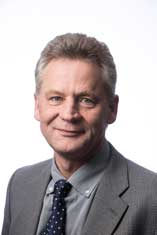 Peter Kirkbride, project sponsor at Costain
Peter Kirkbride, project sponsor at Costain With the exploitation of new cost-effective operational concepts, use of digital technologies and increased dependence on cyber structures, the oil and gas industry is exposed to new sets of vulnerabilities and threats. Cyber-attacks have grown in stature and sophistication, making them more difficult to detect and defend against, and costing companies increasing sums of money to recover from.
With the exploitation of new cost-effective operational concepts, use of digital technologies and increased dependence on cyber structures, the oil and gas industry is exposed to new sets of vulnerabilities and threats. Cyber-attacks have grown in stature and sophistication, making them more difficult to detect and defend against, and costing companies increasing sums of money to recover from.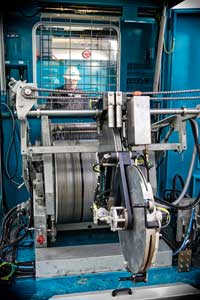 International oilfield services company,
International oilfield services company,  MacGregor
MacGregor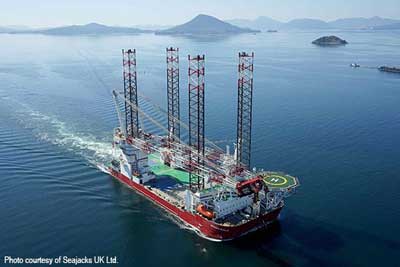 ABS
ABS BMT JFA Consultants (BMT)
BMT JFA Consultants (BMT)
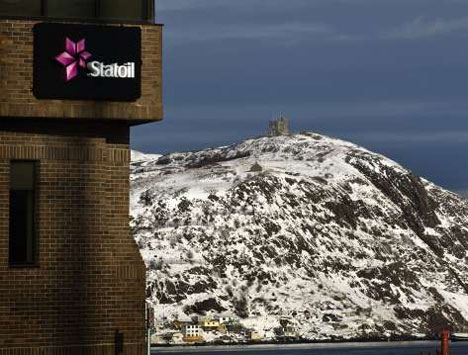 Statoil and its partners were the successful bidders for six exploration licenses in the Flemish Pass Basin, offshore Newfoundland, and two licenses offshore Nova Scotia.
Statoil and its partners were the successful bidders for six exploration licenses in the Flemish Pass Basin, offshore Newfoundland, and two licenses offshore Nova Scotia.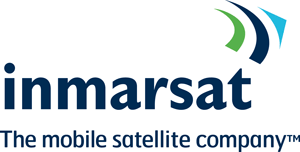 Inmarsat
Inmarsat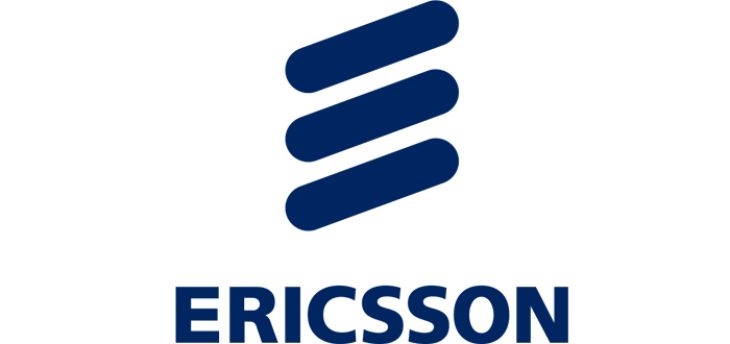 An example of how the strategic cooperation agreement works in practice was highlighted with the
An example of how the strategic cooperation agreement works in practice was highlighted with the  NYC-based
NYC-based  Aker Solutions
Aker Solutions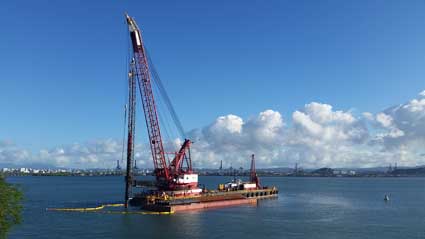 Crowley Puerto Rico Services, Inc.
Crowley Puerto Rico Services, Inc.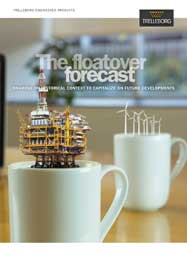 With the oil and gas industry forced to work harder to extract oil around the globe and an increasing reliance on reserves in difficult to reach locations, the resurgence in floatover installation practices continues. In its new whitepaper, The Floatover Forecast, Trelleborg’s engineered products operation recounts the lessons learned, changes in technologies and materials; as well as the trials and errors that have contributed to developments in the field.
With the oil and gas industry forced to work harder to extract oil around the globe and an increasing reliance on reserves in difficult to reach locations, the resurgence in floatover installation practices continues. In its new whitepaper, The Floatover Forecast, Trelleborg’s engineered products operation recounts the lessons learned, changes in technologies and materials; as well as the trials and errors that have contributed to developments in the field. With a mere four orders so far this year the Floating Production System (FPS) sector is suffering. However, things are anticipated to be better next year, with the US Gulf of Mexico (GoM) in particular, having a surprisingly bright future. The area is expected to have as many orders next year as there were globally in 2015 and this positive upturn has already started with the Appomattox Floating Production Semi-Submersible (FPSS) being awarded in Q3, the most expensive unit ordered all year.
With a mere four orders so far this year the Floating Production System (FPS) sector is suffering. However, things are anticipated to be better next year, with the US Gulf of Mexico (GoM) in particular, having a surprisingly bright future. The area is expected to have as many orders next year as there were globally in 2015 and this positive upturn has already started with the Appomattox Floating Production Semi-Submersible (FPSS) being awarded in Q3, the most expensive unit ordered all year.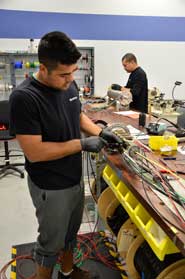 Trained MacArtney Inc.technicians servicing a Focal slip ring
Trained MacArtney Inc.technicians servicing a Focal slip ring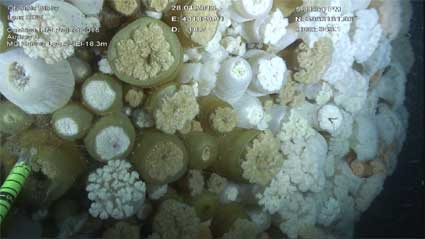 Decommissioning within the offshore environment is rapidly becoming a focused activity for the oil and gas industry. Latest figures from Decom North Sea suggest that there are, approximately, 470 offshore installations in the UK sector due to come out of service by 2030 with an associated cost of US$46.8 billion (£30 billion). With such a formidable undertaking ahead, oil and gas operators are developing their decommissioning plans.
Decommissioning within the offshore environment is rapidly becoming a focused activity for the oil and gas industry. Latest figures from Decom North Sea suggest that there are, approximately, 470 offshore installations in the UK sector due to come out of service by 2030 with an associated cost of US$46.8 billion (£30 billion). With such a formidable undertaking ahead, oil and gas operators are developing their decommissioning plans.